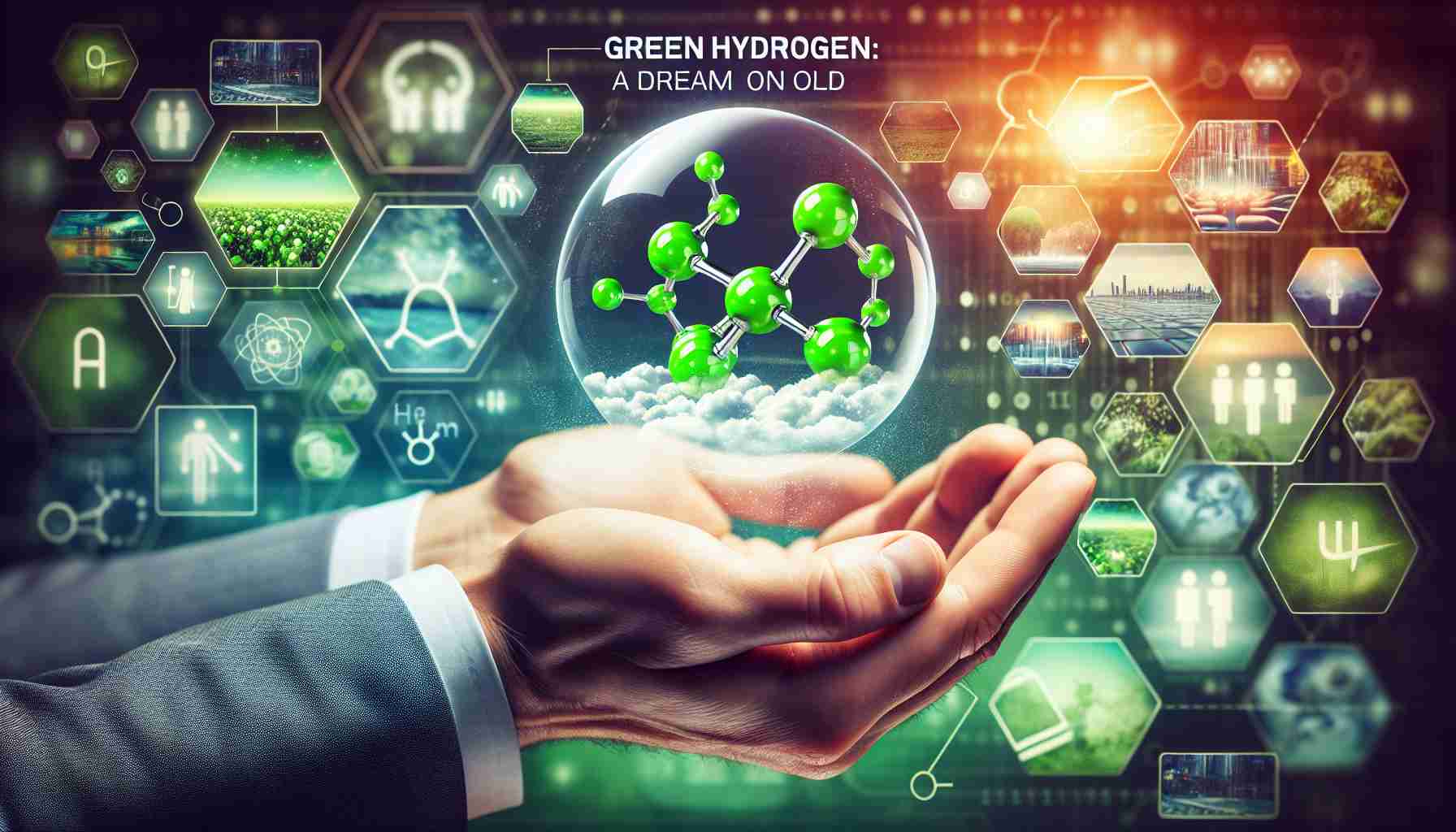Navigating the Green Hydrogen Landscape
In the ever-evolving world of green hydrogen, French utility giant Engie is striking a careful balance between optimism and realism. This energy source gained significant attention in recent years, as many businesses and governments announced bold visions for its future. However, the sector now faces pressing challenges such as steep costs, insufficient funding, and uncertain demand commitments.
Acknowledging these obstacles, Engie is not abandoning its green hydrogen pursuits but rather adjusting its approach. The company has decided to push back its ambitious plans by five years. Instead of scaling up to large projects immediately, Engie is opting for smaller-scale initiatives. This pragmatic shift reflects a strategic pivot towards more manageable and realistic objectives.
Stephan Gobert, who leads strategy for flexible generation across Asia, the Middle East, and Africa, emphasizes the need for a sensible start in navigating these complexities. By focusing on smaller projects, Engie aims to lay a solid foundation for future growth in the green hydrogen market. The current landscape may be challenging, but with careful planning and execution, there remains hope for the successful integration of green hydrogen in the energy mix. Engie’s journey illustrates the trials and triumphs faced by many in this transformative sector, revealing a pathway forward amidst uncertainty.
Green Hydrogen: A Beacon for Sustainable Futures
The pursuit of green hydrogen is not just a technological revolution; it represents a pivotal shift in our socio-economic landscape. As nations strive to meet ambitious climate goals, green hydrogen could potentially reshape the global economy by providing a clean alternative to fossil fuels in various industrial processes, particularly heavy industries such as steel and cement, which are among the largest carbon emitters.
This transition has profound implications for society and culture. Communities dependent on fossil fuel industries might face disruption and job displacement, necessitating robust retraining programs to equip workers with skills relevant to the burgeoning green economy. Conversely, successful integration of green hydrogen could foster job creation in renewable energy sectors, supporting a just transition that aligns environmental sustainability with economic vigor.
Furthermore, the environmental benefits are substantial. The adoption of green hydrogen could play a critical role in achieving decarbonization targets, significantly reducing greenhouse gas emissions. However, the pathway is fraught with challenges, including the digitalization of energy systems and the development of efficient storage solutions. Long-term, the future of green hydrogen lies in innovations that enhance scalability and affordability.
In navigating these complexities, the lessons learned will not only dictate the success of green hydrogen initiatives but will also serve as a blueprint for future sustainable technologies, establishing a long-term framework for a cleaner, more resilient world.
Unlocking the Future: Green Hydrogen’s Challenges and Opportunities
Navigating the Green Hydrogen Landscape
As the energy transition gains momentum, green hydrogen is emerging as a key player in the quest for sustainable energy solutions. While companies like Engie are optimistic about this development, significant hurdles remain, including high production costs, fluctuating investment, and demand uncertainty.
Current Trends in Green Hydrogen
Green hydrogen, produced through the electrolysis of water powered by renewable energy, is gaining traction worldwide. Countries are unveiling ambitious hydrogen strategies, with the European Union setting a target to produce 10 million tons of green hydrogen annually by 2030. This push comes amid a broader energy crisis and increasing scrutiny on carbon emissions.
Features of Green Hydrogen
1. Sustainability: Green hydrogen is considered a clean fuel since its production emits no greenhouse gases.
2. Versatile Applications: It can be used in various sectors including industrial processes, transportation, and energy storage.
3. Energy Storage: Hydrogen serves as a solution for storing renewable energy, balancing supply and demand fluctuations.
Pros and Cons of Green Hydrogen
Pros:
– Emission Reduction: It significantly lowers carbon footprints in hard-to-abate sectors like steel and cement.
– Energy Independence: Countries can reduce reliance on fossil fuel imports by shifting to domestic hydrogen production.
– Job Creation: New projects in this sector can lead to job opportunities and economic growth.
Cons:
– High Costs: Current green hydrogen production methods are expensive compared to fossil fuels.
– Infrastructure Needs: Significant investments in infrastructure for storage and distribution are required.
– Technology Readiness: Many technologies for large-scale hydrogen use are still under development.
Engie’s Strategic Shift
Engie has recognized the urgency of these challenges and opted for a strategic pivot. The company is delaying its large-scale green hydrogen projects by five years, opting instead for smaller pilot initiatives that can gradually build a reliable foundation. This approach is intended to mitigate risks and allow for more manageable investments.
Insights and Predictions
Industry experts predict that as technology advances, the costs associated with green hydrogen will decrease. Innovations in electrolyzer technologies and advancements in renewable energy sources will likely propel the market forward. By the mid-2030s, green hydrogen could become a competitive alternative in the energy landscape.
Use Cases for Green Hydrogen
– Transportation: Fuel cell vehicles powered by hydrogen can help decarbonize the transportation sector.
– Industrial Applications: Industries can utilize green hydrogen in processes requiring high temperatures, moving away from coal and natural gas.
– Power Generation: Hydrogen can complement renewable energy sources, providing a reliable backup for fluctuating energy supplies.
Limitations and Challenges Ahead
Despite its potential, several limitations remain:
– Market Readiness: The transition to hydrogen-based systems requires significant changes in market dynamics and consumer acceptance.
– Regulation and Policy: Governments need to develop frameworks that support hydrogen production and utilization, ensuring fair competition and innovation.
Conclusion
Engie’s adjustment of its green hydrogen strategy reflects a broader trend within the energy sector, recognizing the potential of hydrogen while addressing existing barriers. The journey toward a hydrogen economy is complex but can ultimately lead to a sustainable energy future if tackled with innovation and collaborative efforts.
For more insights on the evolving energy landscape, visit Engie’s official website.


















